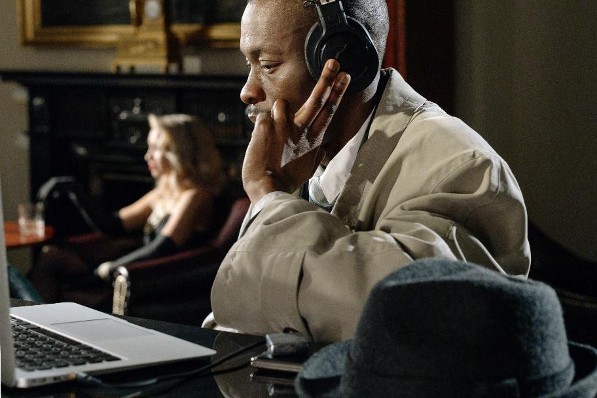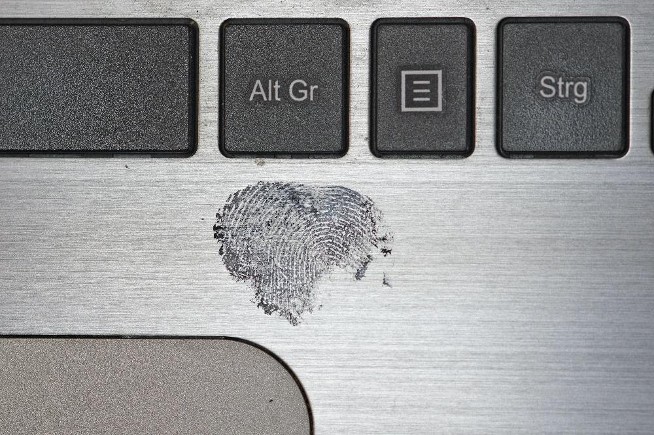Every keystroke, every swipe, every click holds a story. A story that, when read by skilled eyes, unveils truths that are pivotal to law enforcement. This world we’re venturing into is a new kind of detective story – where the heroes decode bytes and bits instead of footprints and fingerprints.
Digital Forensics: A New Age Detective
The evolution of digital technology has not only transformed how we communicate and live but has also ushered in a new breed of crime-fighting professionals. These individuals are the detectives of our digital age, skillfully sifting through digital clues in pursuit of truth and justice.
The Cyberspace Sleuths: Forensic Computer Analysts
Forensic computer analysts are the Sherlock Holmes of cyberspace. These experts utilize their knowledge of digital systems and investigative techniques to uncover critical evidence in our digital lives, helping law enforcement solve crimes in a world where information is no longer confined to tangible objects.
Remember those scenes in mystery novels where the detective finds a hidden compartment in a desk drawer? Today’s version happens on a hard drive, on a server, or in the cloud. Like Holmes used a magnifying glass to inspect physical items, forensic computer analysts used specialized software to scrutinize digital data, pulling out crucial evidence.
Byte-Sized Clues: Understanding Digital Footprints
The digital landscape can seem infinite and overwhelming. But just as footprints can tell a story in the physical world, digital footprints serve as the breadcrumbs these modern-day detectives follow. Each time a person uses a digital device, they leave behind a trail of activity.
This includes websites visited, downloaded files, emails sent, social media interactions, and more. Each piece of data can serve as a crucial piece of a complex puzzle.
Data Deciphering: The Art of Interpreting Digital Clues
Interpreting digital clues requires a unique set of skills and tools. These clues often come encrypted, deleted, or hidden, requiring forensic computer analysts to break through digital barriers to uncover them. It’s like deciphering a secret code, with each byte potentially holding the key to solving a case.
Master of Deduction: Profiling and Predicting
Just as traditional detectives create profiles of suspects based on physical evidence and behavior, forensic computer analysts create digital profiles. They analyze patterns in digital behavior, helping to build a picture of the suspect’s habits, preferences, and possible future actions.
This process can often provide insights that cannot be gleaned from physical evidence alone, making digital forensics a vital component of modern law enforcement.
Digital Forensics: A Fusion of Technology and Investigation
Digital forensics is a dynamic fusion of cutting-edge technology and timeless investigation techniques. It’s an ever-evolving field that adapts and grows with every new tech development.
Forensic computer analysts, the new age detectives, stand at the forefront of this evolution, tirelessly unveiling truths hidden amidst the gigabytes and terabytes of our digital lives.
Just as Sherlock Holmes became synonymous with detective work in the 19th century, so will these digital detectives in our current digital age.
They are the custodians of justice in our increasingly connected world, safeguarding societies from those who seek to exploit the digital realm for nefarious purposes.
Their work is crucial, their dedication inspiring, and their impact undeniable. The digital era has indeed found its Sherlock Holmes.
The Game Changers: Real-world Cases
Step into digital forensics, and you’ll find yourself gripping stories that rival any crime drama. But these aren’t scripted tales — they are real-world cases solved by the innovative application of digital forensics.
Dissecting the Narratives: The Justin Barber Case
The Justin Barber case is a prime example of how digital forensics can upend even the most compelling narratives. Barber’s account of a tragic shooting incident painted him as a mourning husband. This narrative crumbled under the microscope of a Digital Forensic expert.
The expert meticulously analyzed Barber’s computer and found incriminating searches contradicting his version of events. This digital evidence was pivotal in the trial, eventually leading to Barber’s conviction. The truth triumphed, thanks to the thoroughness of digital forensics.
Cell Phone Secrets: A Tale of Hidden Truths
Another testament to the power of digital forensics can be seen in a case where crucial evidence was buried deep within a mobile device. The details of the case must remain confidential. Still, it’s worth noting the central role that cell phone forensic services played in the investigation.
These digital detectives delved into the complex data layers of a smartphone, uncovering hidden clues that swung the case’s momentum. The revelation cracked the case and demonstrated the importance of digital forensics in accessing the truth hidden in our pockets.
Digital Video Investigating: Turning the Tide
Let’s not forget a case where a seemingly minor detail overlooked in a surveillance video almost led to a tragic miscarriage of justice. All seemed lost for the defendant until digital video forensics came into play. Expert analysts pored over the footage, revealing a key detail that had been missed.
This newfound evidence forced a reevaluation of the case, eventually leading to the acquittal of the defendant and the real offender being held accountable. This case illustrates digital forensics’ pivotal role in ensuring justice is served, even when all seems lost.

Pivotal Role of Digital Forensics in the Justice System
The Gavel Meets the Microchip
The relationship between law and technology is akin to an intricate dance. They pivot around each other, one shaping the path of the other. Digital forensics has brought technology right into the heart of the justice system, becoming a backbone of modern investigations. Yet, for all its importance, it is a dance of precision, delicacy, and, most importantly, trust.
The Sanctity of Digital Evidence: A Chain Unbroken
The importance of evidence in any legal proceeding is unquestionable. It forms the bedrock on which cases are built, and verdicts are delivered. In digital forensics, this evidence exists not physically but as a collection of ones and zeros. As with its physical counterpart, maintaining the integrity of this digital evidence is paramount.
Yet, the digital realm poses unique challenges. Every digital file copy is a perfect replica; modification can leave no visible trace. Hence, maintaining a meticulous chain of custody is essential. From acquisition to analysis, every action needs to be documented, every process justified, and every change accounted for. This rigorous discipline builds trust in digital evidence, allowing it to stand scrutiny in a court of law.
Putting Truth to the Test: The Courtroom Impact
But what happens when this carefully gathered and meticulously preserved evidence finally reaches the courtroom? Well, that’s where the real drama unfolds.
Digital evidence has been a game-changer in legal decisions. Its objective nature and the precision it offers have tipped scales in many cases. From unraveling alibis with location data to exposing contradictions through communication records, digital forensics has breathed new life into law enforcement. Yet, it’s not just the presence of digital evidence that matters; it’s the interpretation that holds the key.
Here, the role of an expert, like a forensic computer analyst, comes into play. Their ability to parse through the complexity of digital data and present it in a way that a layperson can comprehend is vital. They don’t merely present the evidence; they tell its story, swaying court decisions with the weight of their expertise and the credibility of their testimony. Their expert witness testimony often guides the gavel, helping ensure that justice is truly served.
Future of Digital Forensics in Law Enforcement
Entering the New Horizon
Digital forensics has rapidly evolved to become a central player in law enforcement and the justice system. But as technology advances at a breathtaking pace, what does the future hold for this cutting-edge field? The answer is as thrilling as it is complex.
The Evolving Landscape of Digital Offenses
Cybercrime is not static. It is ever-changing, adapting, and evolving. Moving deeper into the digital age, we’re confronted with new digital offenses requiring even more sophisticated responses. Consider the rise of cryptocurrency and its implications for cybercrime. Digital currencies are increasingly used in money laundering, ransomware, and other illegal activities. It’s clear that as our digital landscape evolves, so too does the nature of digital crime.
This changing digital landscape introduces new types of offenses and intensifies the challenges digital forensic investigators face. For instance, the increasing use of encryption, especially in messaging apps and email services, is a double-edged sword. While it enhances privacy, it can pose significant hurdles in criminal investigations.
Preparing for Tomorrow’s Challenges
To stay ahead, digital forensic investigators must continuously upgrade their skills and keep up with emerging technologies. AI and machine learning can be significant in rapid data analysis and anomaly detection. But leveraging these tools requires a keen understanding of their potential and limitations.
The Internet of Things (IoT) expansion presents another significant avenue for the future of digital forensics. From smart TVs to Internet-connected refrigerators, IoT devices are becoming common in our lives, and each device can potentially serve as a source of digital evidence. Developing methods to reliably extract and analyze data from these diverse devices will be a key area of growth in the field.
Moreover, digital forensics can’t be limited to just reacting to digital offenses; it must play a proactive role in crime prevention. This could involve advising on best practices for digital evidence preservation or guiding policy decisions related to digital privacy and cybersecurity.
The Road Ahead
The future of digital forensics in law enforcement is a journey into the unknown, but we must undertake it. The challenges will be many, and the path will be arduous. But with every challenge comes a chance to learn, grow, and strengthen the role of digital forensics in our quest for justice.
The Hidden Depths of Digital Evidence
Peering into the Digital Abyss
Diving into the world of digital evidence is like plunging into the deep sea. It’s vast, complex, and holds invisible secrets to the untrained eye. So, what does this digital abyss contain?
Data in Your Pocket: Cell Phones
One of the richest sources of digital evidence is the device you carry in your pocket daily – your cell phone. From text messages, call logs, social media activity, and GPS data to even the types of apps installed, your cell phone is a treasure trove of potential evidence. Add to this the proliferation of smartphones and the explosion of app-based services, and you have a nearly endless source of digital footprints. Mobile device forensics can help you keep your data secure.
Silent Observers: Computer Logs & Internet Histories
Computers are the silent observers of our digital lives. They log our activities, remember the sites we visit, the files we download, and even the emails we send. These digital breadcrumbs can provide invaluable context and timelines in investigations.
Overlooked Witnesses: Emails & Surveillance Footage
Emails and surveillance footage are often the unsung heroes of digital evidence. They can provide direct evidence of illegal activity or corroborate other evidence. But more than that, they can offer insights into motives, relationships, and intent, which can be critical in building a case.
Invisible Ink: Metadata
Finally, there’s metadata – the invisible ink of the digital world. Metadata is data about data, often overlooked in everyday life. However, in the realm of digital forensics, it’s a powerful ally.
Metadata can reveal when a file was created, last modified, or even by whom. In the case of digital images, metadata can disclose the time, date, and sometimes even the location where the image was taken.
Beneath the Surface
Cracking open Pandora’s Box of digital evidence is no easy task. It requires an intricate blend of technical prowess, investigative intuition, and legal expertise. But as the detectives at Eclipse Forensics and their counterparts across the globe are proving, when you know where to look, the digital world reveals a depth of evidence that can be pivotal in the pursuit of justice. And as technology continues to evolve, these digital depths are only set to deepen further.
Eclipse Forensics: Pioneers in a Digital Era
This is where pioneers like Eclipse Forensic senter the narrative. A team defined by the passion and wisdom of Jim Stafford, a trailblazer who transformed his decades of media engineering experience into the mastery of digital forensics.
Eclipse has since been at the forefront of hundreds of cases, etching its name into the annals of law enforcement history, one byte at a time. But remember, this isn’t a sales pitch. It’s recognition for the team that’s revolutionizing the field of digital forensics.
Conclusion
Ultimately, digital forensics has become a lynchpin in modern law enforcement. As our lives become increasingly digital, this new-age detective work’s significance grows. To those interested in uncovering truths, solving mysteries, and bringing justice – a digital forensic consultant is your ally. And for those needing their services, Eclipse Forensics offers expertise and guidance on digital forensics including audio forensic services FL, video forensics and more.

